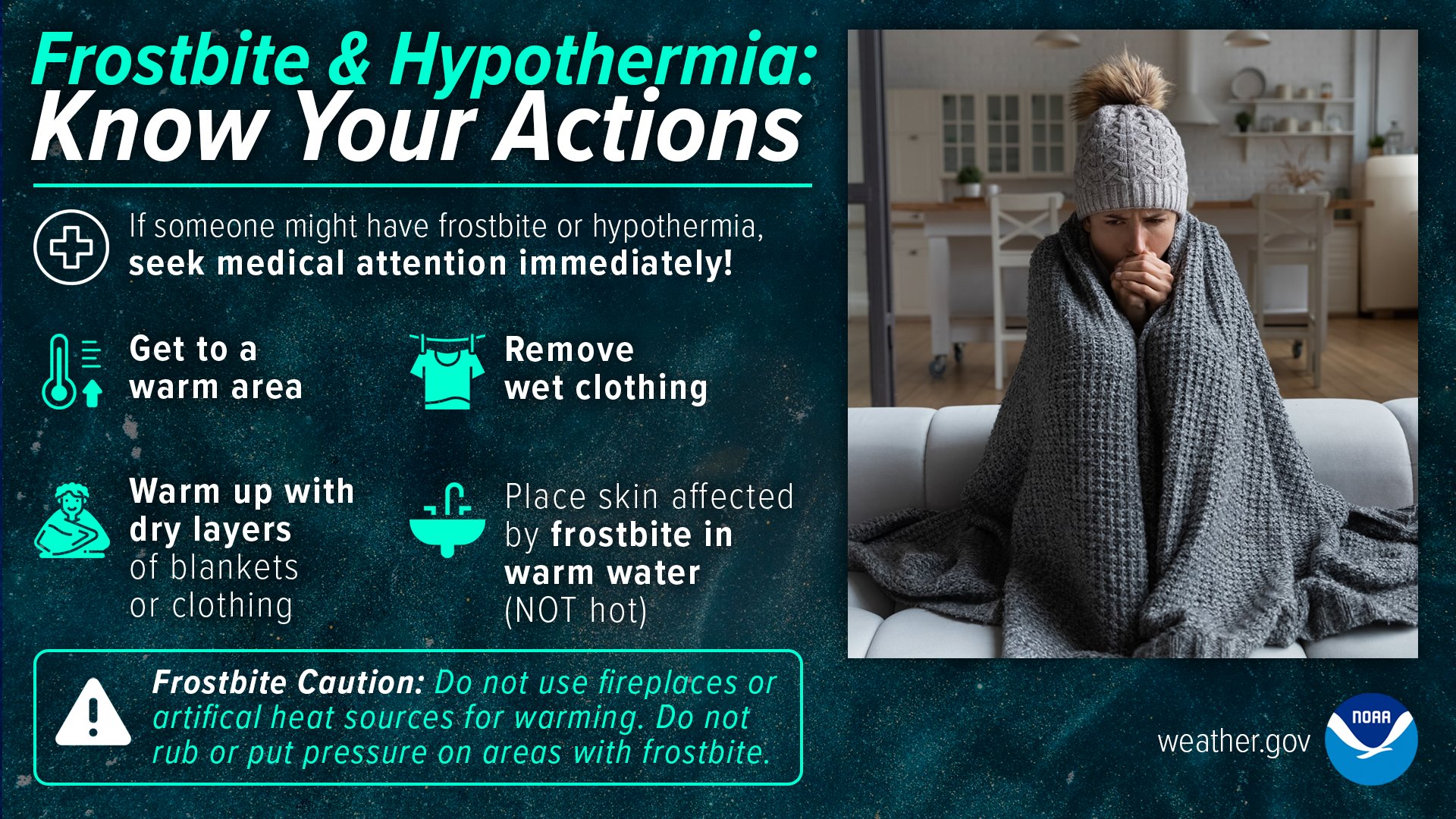Cold air alone can be deadly, but when the air is moving, it feels much colder. The wind chill is the effect of the cold wind on people and animals – as the wind increases, it removes heat from the body faster, driving down skin temperature and, eventually, internal body temperature. Wind chill temperature is therefore based on the rate of heat loss from exposed skin caused by wind and cold, and it can give you an approximation of how cold the air feels on your body.
The wind chill doesn't just make you feel colder than the actual air temperature – the lower the wind chill temperature, the greater and faster your risk for developing frostbite and/or hypothermia. Hypothermia occurs when your core body temperature, normally around 98.6°F (37°C) falls below 95°F (35°C). Frostbite occurs when your body tissue freezes; the most susceptible parts of the body are fingers, toes, ear lobes, and the tip of the nose.
For example, if the temperature is 0°F (-18°C) and there is no wind, it might take over 30 minutes for exposed skin to freeze. However, when the wind is also blowing at 15 mph (13 kt / 24 km/h), then the wind chill temperature is -19°F (-28°C). At this level, exposed skin can freeze in just a few minutes.
It is important to understand that wind chill is related to how quickly the body loses heat; it does not mean things will cool below the actual air temperature. Therefore, regardless of wind speed, no frostbite can occur with air temperatures above freezing, but hypothermia is still a danger.
Staying Warm
When your core body temperature sinks below 95°F (35°C), you have hypothermia. Prolonged exposure to temperatures even as warm as 60°F (16°C), particularly in water, can trigger hypothermia if you are not properly dressed. Of the 28,000 people hypothermia kills yearly, most are seniors, according to the National Institute of Aging, but everyone needs to be careful.
Some medicines, problems with circulation, and certain illnesses may reduce your ability to resist hypothermia. As you age, your body becomes less efficient at letting you know when you are too cold. In addition, older people tend not to shiver effectively, one of the ways the body warms itself up.
Remember these tips to help prevent hypothermia:
- Dress in layers
- Wrap up well when going outside in the cold. Wear warm clothes and a warm hat to ward off winter chill.
- Avoid breezes and drafts indoors.
- Eat hot foods and drink warm drinks several times during the day.
- If you live alone, ask a family member or neighbor to check in daily.
If your temperature is 95°F (35°C) or less, you feel cold and sluggish, or are having trouble thinking clearly, see your doctor immediately or go to the nearest emergency room. It's better to be overly cautious than to die of a disorder that does not have to be deadly.
Degrees of Frostbite
Frostbite happens when the body's survival mechanisms kick in during extremely cold weather. To protect the vital inner organs, the body cuts circulation to your extremities: feet, hands, nose, etc., which eventually freeze.
- First degree: Surface of skin is frozen, called frostnip.
- Second degree: The skin may freeze and harden; blisters form in a day or two.
- Third degree: Muscles, tendons nerves and blood vessels freeze.
- Fourth degree: Pain lasts for more than a few hours and skin may develop dark blue or black. Gangrene is a real threat and will require amputation of extremities if it occurs.
To avoid frostbite, stay inside during severe cold, especially when the wind chill is -50°F or below. If you must go out, try to cover every part of your body: ears, nose, toes and fingers, etc. Mittens are better than gloves. Keep your skin dry. Stay out of the wind when possible. Drink plenty of fluids since hydration increases the blood's volume, which helps prevent frostbite.
Avoid caffeine, alcohol, and nicotine. Caffeine constricts blood vessels, preventing warming of your extremities. Alcohol reduces shivering, a body mechanism that helps keep you warm. Nicotine shuts off the blood flow to your hands. - National Weather Service

